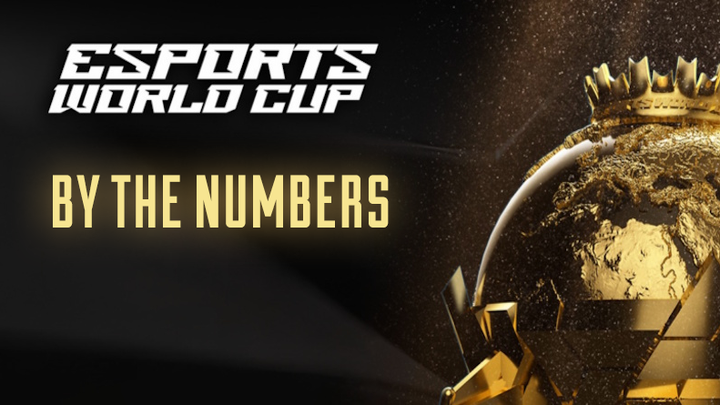Tetris 99 and Apex Legends evolve battle royale past a fad
The constant news about battle royale games can be exhausting.
The success of PlayerUnknown’s Battlegrounds, which itself came from past mods and existing ideas, spawned a series of competitors, including the mainstream monster Fortnite. Many of the biggest first-person shooter franchises added a battle royale mode, or will add one soon. Battle royale has to be a fad, right?
But two games came along just when it seemed like battle royale as a genre was tapped out, and proved that the basic pillars of battle royale games have legs. This isn’t a genre that’s going away anytime soon, and still has plenty of room for adventurous developers to explore.
What are the pillars of a battle royale game?
Battle royale as a genre is defined less by games in which a bunch of people jump out of a plane or bus to find and shoot guns, and more like a loose competitive framework of basic rules.
So a battle royale game, in broad strokes:
- Has a maximum number of players, and the winner is the last player (or squad) standing
- Everyone starts with nothing and builds an advantage via what the game provides
- You can choose your starting position and strategies
- Luck is a factor with the tools the game gives you, but skill will usually beat luck
These pillars can be a little more subtle, but they must be packed by a mounting sense of pacing. The longer you succeed, the tenser a game becomes. The storm or force field that exists at the boundaries of the playable area is one way in which the developers control that pressure. As the storm moves inward, shrinking the playable area on the map, the pace goes up. Players are forced to meet each other and fight as they run toward an increasingly small, safe area of the map.
:no_upscale()/cdn.vox-cdn.com/uploads/chorus_asset/file/11563391/pubg_june18.jpg) PUBG Corp.
PUBG Corp.
Battle royale matches also tend to be short, contained experiences. I don’t have to win. In fact, I win very rarely! I’m very bad at these games! But the stakes in each map tend to be very low.
And losing usually means that you’ve learned something about the game. This is important due to another interesting aspect of battle royale games: There is usually only one map per game, and learning how to get around is a big part of victory. The map is as much of a character as the players themselves, and knowing it well gives you a huge advantage.
The Next Generation of Battle Royale
After putting a hundred hours into PUBG and bouncing off Fortnite’s nimble building, I thought I was done with battle royale for good. I dabbled with games like Red Dead Online’s Gun Rush, sure, but I figured — same as a lot of players — that I was witnessing the tail end of a trend, like trading Pokemon cards back in grade school.
Apex Legends and Tetris 99 have proven me wrong. Here’s why.
Apex Legends
Apex Legends is the most obvious example of a battle royale game that’s pushing the genre forward. Respawn and EA even avoided conversations about battle royale fatigue with a surprise launch, after a poorly hidden influencer and streamer test weekend.
Apex Legends adds character classes to battle royale, building off the previous attempts to do so by games like Realm Royale. I may be terrible with a sniper rifle, but I can pick Wraith and set up void tunnels for my team to enjoy mobility, or toss out heals as Lifeline. These heroes have useful kits and, more importantly, I can bond with them emotionally in a way I can’t with PUBG’s Guy With Helmet And Pan or Fortnite’s John Wick-alike.
:no_upscale()/cdn.vox-cdn.com/uploads/chorus_asset/file/13746944/Apex_Legends.jpg) Respawn Entertainment/Electronic Arts via Polygon
Respawn Entertainment/Electronic Arts via Polygon
The characters are great, but the real evolution of Apex Legends shows up in the accessibility options and the wealth of information the game constantly feeds players through the ping system.
I feel great even when I’m just exploring. Running, sliding, and ziplines all feel fantastic, turning the mundane moments of getting to a new bunch of buildings to loot or just goofing around with friends into their own highlights.
None of these things are very new on their own; Respawn didn’t reinvent the wheel. But the team introduced so many small but thoughtful touches to the game’s systems that everything about it feels obvious in retrospect. It has only taken a few weeks, but Apex Legends has gone from a game that is obviously inspired by Fortnite to a game that has features I miss when I go back to play Fortnite.
Even Epic Games have noticed. Fortnite has added a new ping system, and now the developers are discussing respawns. Large — and sometimes even small — iterations on existing ideas matter, and so does execution. And Apex Legends excels at both.
Tetris 99
Tetris 99 is the other game that shows what the battle royale genre can do. “Tetris battle royale” sounds like satire, but I haven’t been able to put my Switch down since I’ve downloaded it.
Competitive Tetris isn’t a totally new concept, but Tetris 99 puts you against 98 opponents and slowly amps up the pressure. As other players drop out, you become more likely to suffer from the garbage blocks piled on you by players doing better.
This mimics the battle royale mechanic of forcing you into conflict with the remaining survivors until only one person is left standing. You can flunk out early due to some bad luck, or find yourself stuck in a battle of wills and frantically t-spinning against one other person for the final win. There is some luck, but it’s mostly skill. And it works. Tetris battle royale, as strange as it sounds on paper, was a good idea.
Tetris 99 captures so many of the same feelings as a tense match of PUBG or a frantic firefight in and around a building in the final zone of Apex Legends, even though the games are all so radically different.
I can’t wait to see what other series are able to do with the basic rules that make battle royale games what they are. The genre has a long, interesting future ahead of it that can no longer be called a “fad.”













